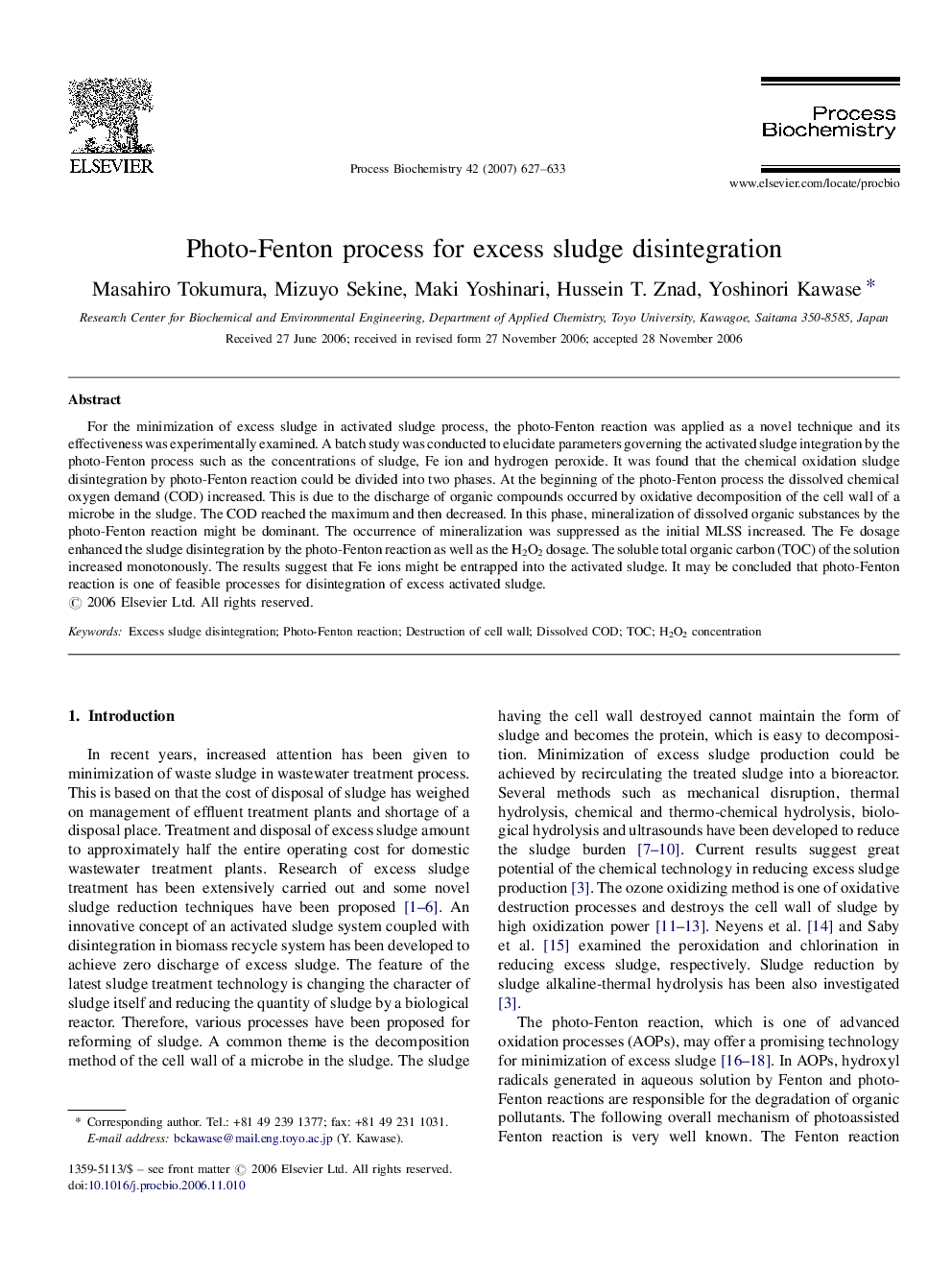| Article ID | Journal | Published Year | Pages | File Type |
|---|---|---|---|---|
| 36018 | Process Biochemistry | 2007 | 7 Pages |
For the minimization of excess sludge in activated sludge process, the photo-Fenton reaction was applied as a novel technique and its effectiveness was experimentally examined. A batch study was conducted to elucidate parameters governing the activated sludge integration by the photo-Fenton process such as the concentrations of sludge, Fe ion and hydrogen peroxide. It was found that the chemical oxidation sludge disintegration by photo-Fenton reaction could be divided into two phases. At the beginning of the photo-Fenton process the dissolved chemical oxygen demand (COD) increased. This is due to the discharge of organic compounds occurred by oxidative decomposition of the cell wall of a microbe in the sludge. The COD reached the maximum and then decreased. In this phase, mineralization of dissolved organic substances by the photo-Fenton reaction might be dominant. The occurrence of mineralization was suppressed as the initial MLSS increased. The Fe dosage enhanced the sludge disintegration by the photo-Fenton reaction as well as the H2O2 dosage. The soluble total organic carbon (TOC) of the solution increased monotonously. The results suggest that Fe ions might be entrapped into the activated sludge. It may be concluded that photo-Fenton reaction is one of feasible processes for disintegration of excess activated sludge.
